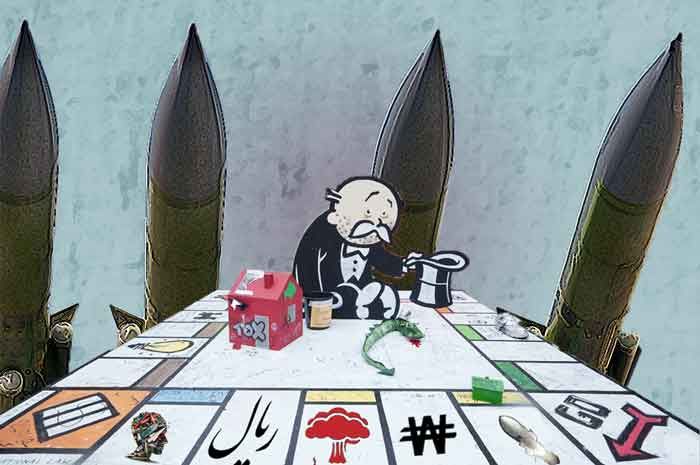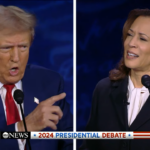
In February, the Financial Action Task Force (FATF)—an intergovernmental body responsible for promoting policies to protect the global financial system—released a report on the financing of WMD proliferation. The new report is a much-anticipated update to the task force’s aging 2008 guidance on proliferation financing. But it is unclear whether the new guidance represents much change—if any—over the 2008 version.
In March, on the heels of the new FATF report, came a rather discouraging assessment of proliferation financing by the Panel of Experts established under UN Security Council Resolution 1874. This assessment detailed several shortcomings in global sanctions implementation that have allowed North Korea to stay connected to international banking channels. The report concluded that North Korea is “flouting the most recent resolutions by exploiting oil supply chains, complicit foreign nationals, offshore company registries, and the international banking system.” North Korea, according to the report, continues to skirt targeted financial sanctions by obfuscating the true beneficiaries of accounts it owns and transactions in which it participates. The panel cited several instances in which North Korean entities have been able to evade “rudimentary due diligence checks” by using front companies registered in offshore secrecy jurisdictions such as Seychelles and the British Virgin Islands—jurisdictions that, for a fee, will provide a degree of corporate anonymity.
Unfortunately, the guidance issued by the task force is woefully out of touch with the findings of the panel. To be sure, the new FATF report offers “non-binding” guidance to the public and private sectors in four general areas: implementing the UN Security Council’s targeted financial sanctions; implementing general, non–entity-specific proliferation financing measures; enhancing interagency cooperation and information-sharing; and assisting national authorities with monitoring and compliance. But the guidance would do little to improve global implementation of rules and regulations specifically focused on proliferation financing—implementation that today is half-hearted.
Since the new FATF report contributes little to international efforts against proliferation financing, is it time to ditch the current approach to proliferation financing? Is it time to adopt a more concrete and exacting system? If so, what would such a system look like?
Achieving significant inroads against proliferation financing requires greater international political commitment to addressing the mechanisms that underlie proliferation financing and sanctions evasion. As a first step, requiring banks to keep the true identity of all account holders (that is, beneficial ownership) and to refuse transactions involving secrecy jurisdictions would go a long way. The feasibility of this approach, however, is questionable given the scope of secrecy jurisdictions, which some estimate to hold between $21 and $32 trillion in private wealth. Moreover, many of the individuals responsible for making decisions that could limit proliferation financing are quite fond of using secrecy jurisdictions to hide their own cash.
Defining terms. There is no commonly accepted definition of “proliferation financing.” But two general approaches to proliferation financing are explicitly articulated in, or can be inferred from, UN Security Council resolutions.
The first approach is found in Resolution 1540, which requires member states to implement measures to prevent non-state actors from acquiring weapons of mass destruction and means to deliver them. States must also implement measures to prevent financing related to illicit procurement of proliferation-sensitive goods and technologies. In terms of how states should accomplish these aims, not much guidance is provided.
The second approach requires states to establish and maintain mechanisms to implement targeted financial sanctions found in country-specific resolutions. That is, states must maintain legal and regulatory frameworks adequate for financial institutions to screen for and freeze transactions linked to UN-designated entities. The United States, for example, uses a tangled, somewhat jerry-rigged system of legislative statutes, executive orders, and regulations to prohibit both US- and UN-designated entities from accessing US financial institutions. The most recent element of this system—Executive Order 13810, signed by President Trump in September—expands sectoral sanctions against North Korea and lays a framework for targeting non-US banks that intentionally (that is, “knowingly”) act on behalf of North Korea.
The task force, in its 2008 report, defined proliferation financing as “providing financial services for the transfer and export of nuclear, chemical, or biological weapons; their means of delivery and related materials.” In 2012, the FATF added proliferation financing to its list of 40 standards and recommendations for countering money laundering and terrorist financing. Specifically, recommendation 7 states that, in accordance with applicable Security Council resolutions, countries should establish national authorities to implement targeted financial sanctions. This requires establishing, for example, rules and regulations for monitoring the transactions and accounts of designated entities, as well as appropriate legal frameworks to freeze those transactions and accounts.
At first glance, implementing such measures to stop proliferation financing makes perfect sense. The cases of Iran and North Korea show how states can exploit international markets to acquire proliferation-sensitive goods and technologies. Iran, for example, relied on foreign suppliers to acquire key components for its centrifuges. Similarly, North Korea sought out foreign markets to advance its ballistic missile program. Each nation piggybacked on formal financial systems in order to facilitate transactions. It makes sense, then—by turning banks into a choke point—to target and stop the means that states and non-state actors use to finance illicit procurement.
In practical terms, however, addressing proliferation financing is very complex, and in some cases it may not be possible. First, while the task force acknowledges in its 2008 and 2018 reports that entity-based screening is not risk-based—meaning that it only requires states to screen for designated entities—the task force does recognize the implied “preventative intent” associated with the sanctions resolutions. In other words, not only do banks need to investigate current accounts and customers but also prevent future transactions that may be associated with designated entities or people working on behalf of those entities. For example, UN Security Council Resolution 2094, which strengthened financial sanctions against North Korea in 2013, declares that member states shall also “prevent the provision of financial services… that could contribute to [North Korea’s] nuclear or ballistic missile programs… .” Clearly, this requirement implies that states must do more than just screen for designated entities.
The task force suggests a number of “contextual factors” of which banks and national authorities should be aware. The factors include: the volume of international financial transactions, a country’s level of compliance with measures against money laundering and terrorist financing, underlying proliferation risks, and the strength of national export control systems. These are all important—but are also quite vague. Many jurisdictions linked to frequent proliferation or transshipment of dual-use goods and technology, for example, are also global hubs for trade and finance. And none of the “contextual factors” really provides additional insights into potential sanctions evasion or proliferation financing.
Legitimate or illegitimate? A key problem for financial institutions, whether they are attempting to prevent transactions by designated entities or searching for proliferation-related “red flags,” is that illicit procurement (along with sanctions evasion) is often indistinguishable from normal trade and commerce. It turns out that proliferation financing looks a lot like run-of-the-mill, trade-related transactions. That is, the vast majority of proliferation-sensitive procurement—at least according to public records—is conducted through legitimate trade and finance channels. The networks of middlemen, financiers, shippers, and insurers who facilitate illicit procurement do so using the same channels as any other industry. In fact, according to one assessment, proliferation-sensitive items have been bought and sold quite blatantly through online platforms such as Alibaba (China’s version of Amazon).
North Korea, for example, is not necessarily using new, novel, or innovative techniques to access the global financial system. In fact, most of its methods are the same techniques that sanctions evaders, narco-traffickers, and arms dealers have been exploiting for decades. This suggests that North Korea’s continued ability to access the global financial system is not necessarily reflective of implementation failures, but rather reflective of broader weaknesses in global rules and regulations against money laundering. One such weakness is evident in the persistence and normalization of global secrecy jurisdictions. These jurisdictions are magnets for financial crime—and serve legitimate business purposes only superficially.
In its new report, FATF identifies certain “situations indicating possible proliferation financing indicators,” but none of these situations takes global secrecy jurisdictions into consideration. For example, the task force suggests that banks scrutinize transactions that involve a “person or entity in a foreign country of proliferation concern.” China is a country of proliferation concern—but according to UN trade statistics, the United States conducted more than $597 billion in trade with China in 2016, making it highly impractical to scrutinize every transaction involving a Chinese person or entity. In addition, the task force identifies several indicators related to the re-exportation of goods and services, such as whether a person involved in a transaction is located in a “foreign country of diversion concern” or whether a freight-forwarding firm is listed as the product’s final destination. While these indicators may be associated with suspicious transactions, they do not necessarily indicate proliferation. In fact, re-exports accounted for almost 3 percent of total trade in 2016, according to UN data.
Given the continued difficulty of differentiating proliferation financing from normal trade and commerce, it is no surprise that implementing targeted financial sanctions and monitoring for activity-based proliferation financing are so fragmented.
So what should be done? The task force does make useful recommendations about increasing information-sharing relationships between the public and private sectors—especially in terms of proliferation financing and sanctions evasion. Such measures are extremely important, especially considering that—according to an October 2017 report by Royal United Services Institute, a British think tank—between 80 and 90 percent of information shared between banks and law enforcement is underutilized or not used at all. But even this guidance is somewhat stale. In fact, Sonia Ben Ouagrham-Gormley—an associate professor at George Mason University’s Schar School of Policy and Government, and one of the first to write about the challenges of addressing proliferation financing—recommended in 2012 that governments increase information-sharing relationships with the private sector. This recommendation has since been championed in several other outlets, including an April 2017 report by the Royal United Services Institute and an October 2017 report by King’s College London.
It is important to recognize that identifying individual transactions and accounts is a labor- and cost-intensive process, so entities will likely continue to fall through the cracks. Several observers have suggested that emerging technologies such as machine learning and artificial intelligence might help banks enhance compliance and improve due diligence—or even that these technologies could monitor for transactions related to proliferation financing. Even this approach, however, would require that models be “trained” with concrete examples that could help them identify proliferation financing.
The current approaches to countering proliferation financing seem to be missing their mark. Entity-based screening continues to be plagued by poor sanctions implementation and the ability of illicit networks to skirt banks’ on-boarding and due diligence processes. Activity-based proliferation financing is practically indistinguishable from legitimate trade and commerce. Should countries throw in the towel? To make real gains in countering proliferation financiers, policy makers need a fresh approach—one that addresses the institutions that enable proliferation financing and allow proliferator networks to hide behind anonymous corporate registries. Perhaps a good place to start is at home—the United States is one of the world’s biggest secrecy jurisdictions.
Together, we make the world safer.
The Bulletin elevates expert voices above the noise. But as an independent nonprofit organization, our operations depend on the support of readers like you. Help us continue to deliver quality journalism that holds leaders accountable. Your support of our work at any level is important. In return, we promise our coverage will be understandable, influential, vigilant, solution-oriented, and fair-minded. Together we can make a difference.
Topics: Analysis















